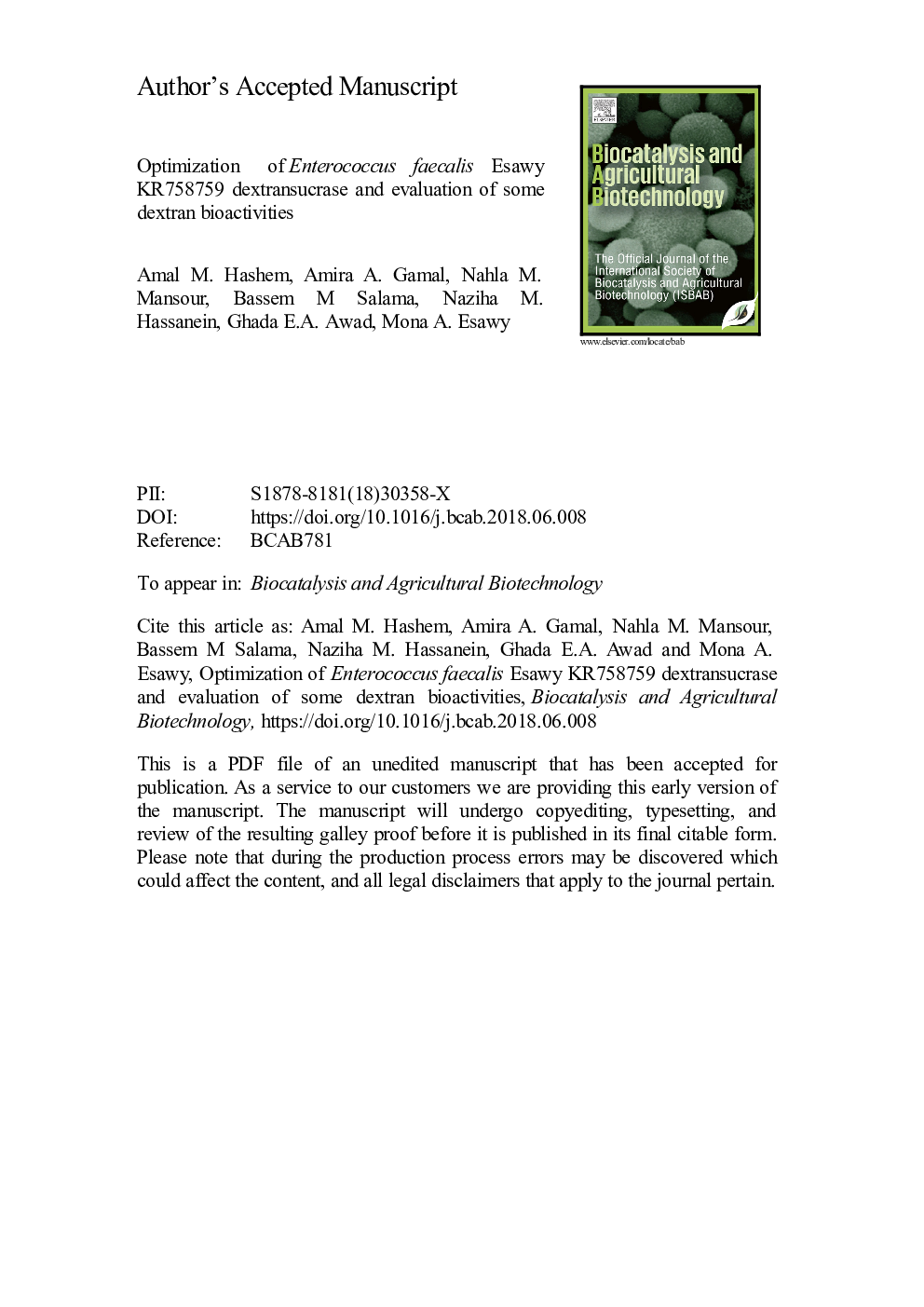| Article ID | Journal | Published Year | Pages | File Type |
|---|---|---|---|---|
| 8405748 | Biocatalysis and Agricultural Biotechnology | 2018 | 46 Pages |
Abstract
Twelve bacterial strains were isolated from beehives of Yemen, Nigerian and Libyan honey bee. All the isolates showed dextransucrase activity with degrees of variation. Esawy-1 recorded the highest activity (10.53) and was identified morphologically and based on 16S rRNA as Enterococcus faecalis. Some isolate safety was assessed such as hemolytic activity and resistance to antibiotic. The isolate showed sensitivity to most tested antibiotic such as levofloxacin, ofloxacin, ciprofloxacin and vancomycin. Also, the hemolytic activity was negative. A 2- level Plackett-Burman design was used to determine the bioprocess parameters that affected dextransucrase productivity. Central composite design was consequently showed 6.70-fold improvement in dextransucrase productivity in compared to the basal medium. Also, the results showed a 96% correlation between sucrose concentration and the amount of dextran yield. FTIR and 1HNMR spectrum confirmed that the formed polysaccharide was dextran comparing to a standard dextran. Enterococcus faecalis Esawy KR758759 dextran showed a fibrinolytic activity matching the standard Hemoclar preparation (40%) while the anticoagulation activity was negative. Also, it recorded a promising prebiotic against Lactobacillus casie (1.82). All previous results recommended the Enterococcus faecalis dextran to be used in food and pharmaceutical fields and paid attention to the honey as a source of potential bacterial dextransucrase.
Keywords
Related Topics
Life Sciences
Agricultural and Biological Sciences
Agricultural and Biological Sciences (General)
Authors
Amal M. Hashem, Amira A. Gamal, Nahla M. Mansour, Bassem M. Salama, Naziha M. Hassanein, Ghada E.A. Awad, Mona A. Esawy,
